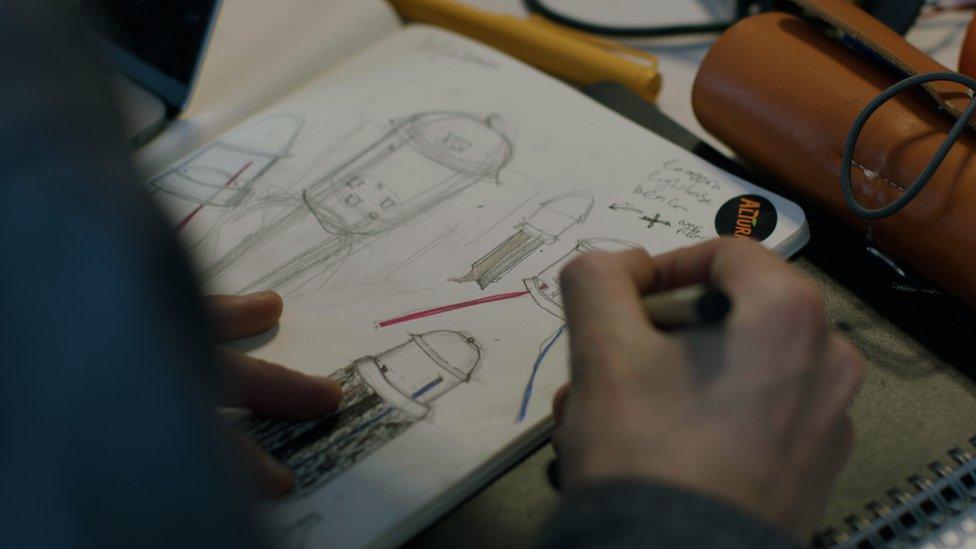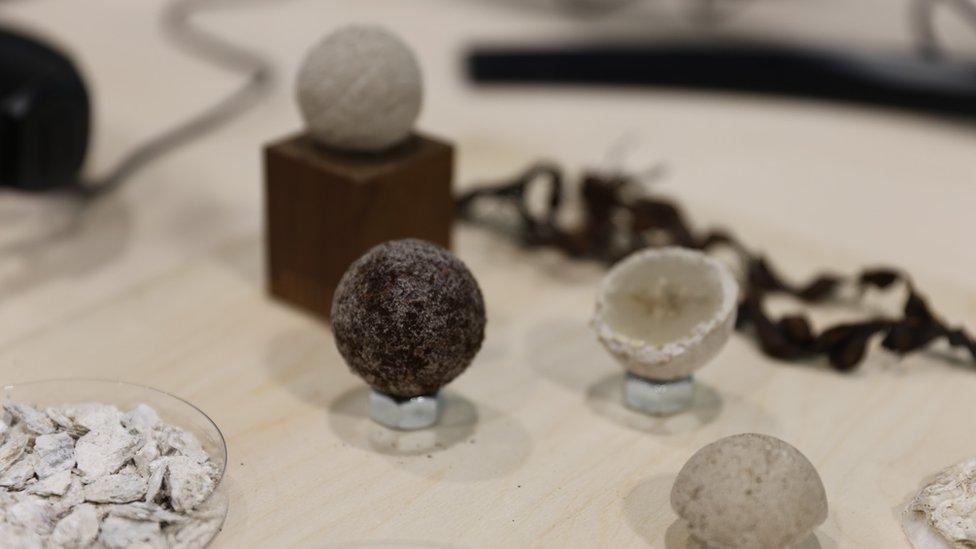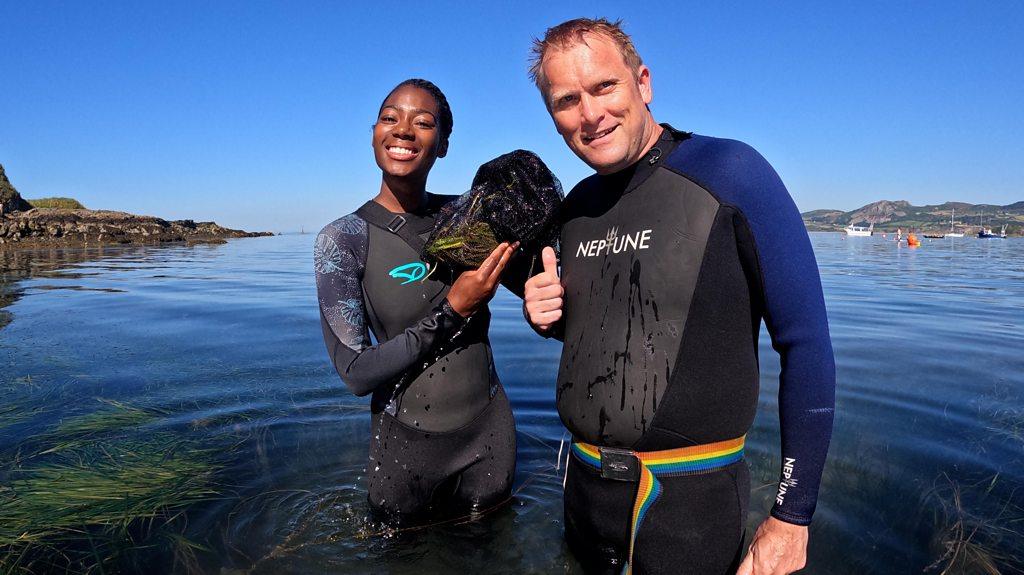Marine designs: Students present ideas to protect oceans
- Published
- comments

The winners of a design competition for solutions to clean up the oceans have been announced.
Students from the Royal College of Art took part in the RCA Grand challenge.
In partnership with the Royal National Lifeboat Institution (RNLI) students were asked to explore how design could improve the health of the oceans. The students were partnered with RNLI volunteers.
Here are some of the inventions that won.
Sea seeds (First place)

The winning entry had a simple hack for people enjoying the ocean to give back to the environment.
Kayakers, sailors and other water enthusiasts are able to planting new seagrass by throwing the sea seed into the ocean.
Seagrass can help to draw carbon out of our atmosphere and help fight rising temperatures!
The designers created a new biodegradable seed casing made from seaweed algae and crushed oyster shell to make planting more efficient.
Go Water (second place)

GoWater combines a wearable sensor, a virtual map, and a data input system.
It allows locals and visitors to contribute info about water quality to charities while they do their water sports activities in the Gower Peninsula in Wales.
Pollenwave (Third place)

Pollenwave is a biodegradable sensor system that monitors the temperature, pH, and oxygen levels in remote ocean locations.
The design is so there can be a more detailed understanding of the environmental changes that affect marine life (one example being the declining populations of Atlantic salmon).
Once Pollenwave's sensors have been spread and have collected data, they will breakdown in two to six weeks in the ocean without causing harm to marine life.
Insoluble solutions (runner-up)

One of the runners-up, a project called Insoluble Solutions suggests using Jellyfish mucus to create a filtration system which would get rid of microplastics.
Jellyfish blooms which are huge swarms of jellyfish are damaging to marine life and have been found to disrupt the marine food cycle.
The device has a light which attracts the jellyfish and sensor which can distinguish jellyfish from other marine life. The jellyfish are then pushed up to a net at the top of the device where their mucus is extracted.
The designer say that the jellyfish mucus, being insoluble which means it doesn't dissolve in water, attracts other insoluble materials like microplastics.
- Published27 September 2022

